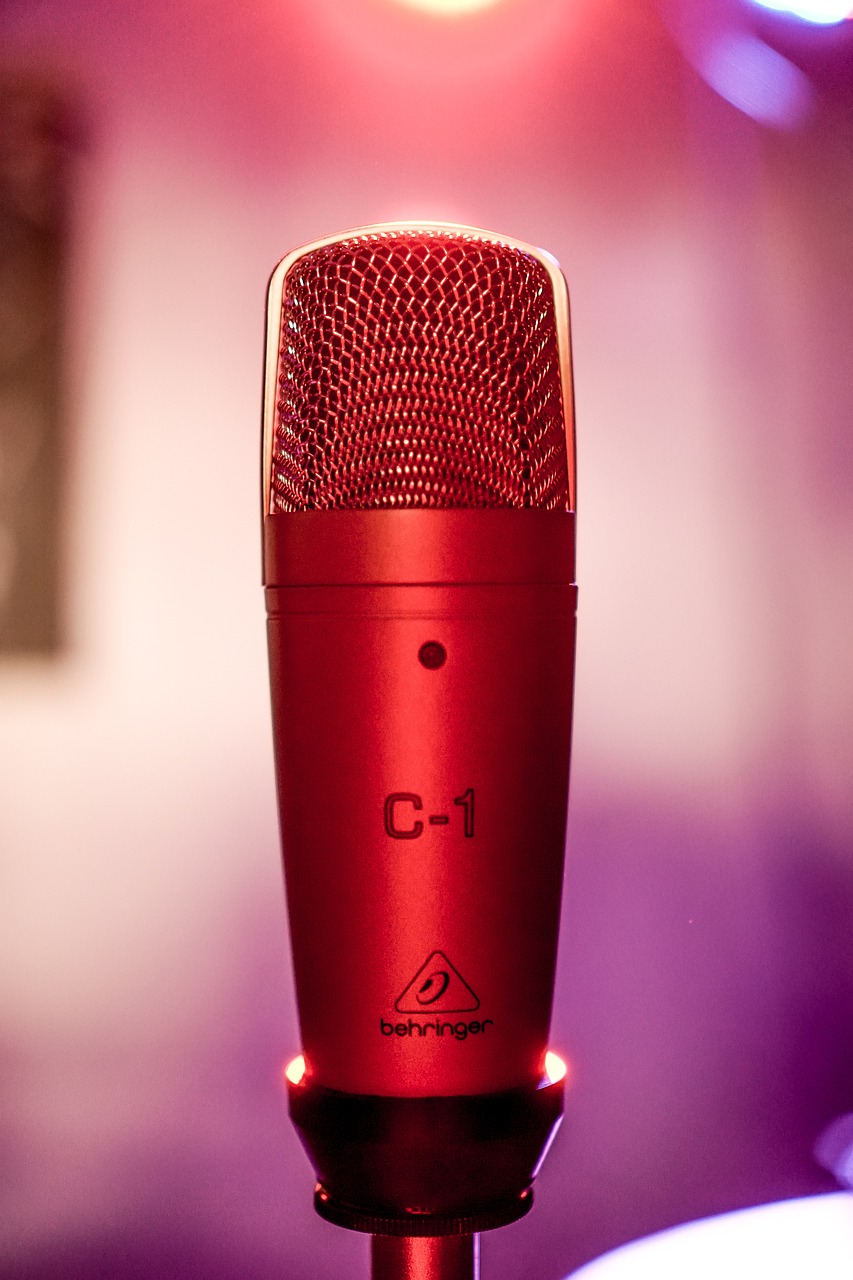In the world of cordless die grinders, temperature plays a crucial role in determining battery performance. We all love the convenience these power tools provide, but have you ever wondered how temperature affects their functionality? In this article, we will explore the fascinating relationship between temperature and battery performance, and discuss why it is important to understand this impact. Whether you are a DIY enthusiast or a professional tradesperson, gaining insights into this topic will undoubtedly help you maximize the efficiency and longevity of your cordless die grinders. So, let’s dive in and uncover the secrets behind temperature and battery performance in these versatile tools.
Introduction
Cordless die grinders have become an essential tool for many professionals and DIY enthusiasts. These portable power tools offer convenience and versatility, allowing users to access hard-to-reach areas without being limited by cords or wires. A key component that determines the performance of cordless die grinders is the battery. The battery technology used in these devices directly affects their power output, runtime, and overall efficiency. In this article, we will explore the importance of battery performance in cordless die grinders, with a specific focus on how temperature can impact the battery’s capabilities.
Definition of Cordless Die Grinders
Cordless die grinders are handheld power tools that are specifically designed for tasks such as grinding, polishing, and cutting. Unlike their corded counterparts, these die grinders are powered by rechargeable batteries, providing users with the freedom to move around without the hassle of cords or cables. They are commonly used in various industries, including automotive, metalworking, construction, and woodworking.
Importance of Battery Performance in Cordless Die Grinders
The performance of cordless die grinders heavily relies on the battery’s capabilities. A high-performing battery directly translates to longer runtimes and greater power output, allowing users to complete tasks more efficiently. Furthermore, a reliable battery ensures uninterrupted operation, preventing delays or inconveniences during critical tasks. Therefore, understanding the factors that influence battery performance, particularly temperature, is crucial for optimal usage of cordless die grinders.

Battery Technology
Various types of batteries are used in cordless die grinders, each with its own advantages and disadvantages. The most common battery technologies include lithium-ion (Li-ion), nickel-cadmium (NiCd), and nickel-metal hydride (NiMH) batteries.
Lithium-ion batteries are the preferred choice for most cordless die grinders due to their high energy density, lightweight design, and minimal self-discharge. These batteries offer high power output, longer runtimes, and faster charging times. However, they are sensitive to temperature extremes, which can negatively impact their performance.
Nickel-cadmium batteries are known for their durability and ability to withstand harsh environments. They can operate in extreme temperatures and have a longer lifespan compared to other battery types. However, these batteries are bulkier, heavier, and have a higher self-discharge rate.
Nickel-metal hydride batteries provide a balance between the other two battery types. They offer a higher energy density than nickel-cadmium batteries but are not as sensitive to temperature changes as lithium-ion batteries. However, they have a shorter lifespan and lower power output compared to lithium-ion batteries.
Advantages and Disadvantages of Different Battery Technologies
Each battery technology used in cordless die grinders has its own set of advantages and disadvantages.
Lithium-ion batteries, as mentioned earlier, offer high energy density, longer runtimes, and faster charging times. They also have a lower self-discharge rate, meaning they can retain their charge for longer periods when not in use. However, these batteries are more expensive compared to other battery types and can be affected by extreme temperatures, leading to reduced performance and potential damage.
Nickel-cadmium batteries are highly robust and can withstand extreme temperatures. They have a longer lifespan and lower self-discharge rate compared to other battery types. However, they are heavier, bulkier, and have a lower energy density, resulting in shorter runtimes and slower charging times.
Nickel-metal hydride batteries offer a good balance between the advantages of lithium-ion and nickel-cadmium batteries. They have a higher energy density than nickel-cadmium batteries and are not as sensitive to temperature fluctuations as lithium-ion batteries. However, they have a shorter lifespan and lower power output compared to lithium-ion batteries.
Temperature Effects on Batteries
Temperature plays a significant role in the performance of batteries, including those used in cordless die grinders. Extreme temperatures, whether too high or too low, can impact the battery’s capacity, power output, and overall lifespan.
When exposed to high temperatures, batteries can experience a decrease in capacity and power output. The increase in temperature accelerates the chemical reactions inside the battery, causing the electrolyte to break down and the internal resistance to increase. As a result, the battery’s voltage drops, reducing its overall capacity and power delivery.
On the other hand, low temperatures can also affect battery performance. Cold temperatures cause the chemical reactions within the battery to slow down, reducing the battery’s capacity and power output. Additionally, low temperatures increase the internal resistance of the battery, making it less efficient in delivering power.

Temperature Ranges for Optimal Battery Performance
For optimal battery performance, cordless die grinders should be operated within specific temperature ranges. While these ranges may vary depending on the battery technology used, generally, lithium-ion batteries perform best within temperatures between 20°C (68°F) and 30°C (86°F). Nickel-cadmium batteries can operate in a wider temperature range, typically between -20°C (-4°F) and 40°C (104°F). Nickel-metal hydride batteries perform adequately within similar temperature ranges as nickel-cadmium batteries.
Effects of High and Low Temperatures on Battery Capacity and Life
Exposure to high temperatures can lead to a reduction in battery capacity and a shorter overall lifespan. The accelerated chemical reactions within the battery result in faster degradation of the electrodes and electrolyte, causing irreversible damage. High temperatures can also lead to thermal runaway, a dangerous condition where the battery’s temperature continues to rise uncontrollably, potentially causing explosions or fires.
Similarly, low temperatures can affect battery capacity and lifespan. The slower chemical reactions at low temperatures reduce the battery’s available capacity, resulting in shorter runtimes. Prolonged exposure to cold temperatures can also cause the battery to freeze, damaging its internal components and rendering it unusable.
To ensure optimum battery performance and longevity, it is important to protect cordless die grinders from extreme temperature conditions, storing them in suitable environments and avoiding operation in temperature extremes whenever possible.
Thermal Management Systems
Given the impact of temperature on battery performance, cordless die grinders often incorporate thermal management systems to regulate battery temperature and prevent overheating or excessive cooling. These systems are designed to maintain the battery within a safe operating temperature range, maximizing its performance and extending its lifespan.
Effective thermal management in cordless die grinders involves various methods and features aimed at controlling battery temperature. Some of these methods include:
-
Heat sinks: Heat sinks are used to dissipate excess heat generated by the battery during operation. These metal components absorb heat and transfer it to the surrounding air, preventing the battery from overheating.
-
Cooling fans: Some cordless die grinders are equipped with cooling fans that direct airflow over the battery, aiding in heat dissipation. These fans help regulate the temperature of the battery, maintaining it within the optimal range.
-
Temperature sensors: Cordless die grinders may be equipped with temperature sensors that monitor the battery’s temperature in real-time. These sensors enable the device to adjust its power output or activate cooling mechanisms when the temperature exceeds certain thresholds.

Battery Performance Tests
To evaluate the performance of batteries in different temperature conditions, standardized tests have been developed. These tests help manufacturers and users understand how batteries perform under various temperature scenarios, ensuring reliable operation and optimal battery life.
One common test is the capacity test, which measures the total amount of charge a battery can store. The battery is discharged at a specific rate until its voltage reaches a predetermined threshold. The capacity is then calculated based on the discharged charge.
Another important test is the power output test, which measures the battery’s ability to deliver power consistently. This test involves measuring the voltage and current output of the battery during a specified load. The power output is calculated as the product of voltage and current.
These tests are typically conducted at different temperature levels to assess the battery’s performance across a range of operating conditions.
Measurement of Battery Capacity and Power Output in Various Temperature Conditions
Battery capacity and power output are measured using specialized equipment and protocols. The battery is subjected to controlled temperature conditions with the help of environmental chambers, where the temperature can be adjusted to replicate real-world scenarios.
Capacity tests involve discharging the battery at a specific rate, while monitoring the voltage and current. The discharge curve is then analyzed to determine the battery’s capacity under various temperature conditions.
Power output tests measure the voltage and current produced by the battery during different load conditions. By analyzing the results, manufacturers and users can understand the battery’s power delivery capabilities in specific temperature environments.
These measurements and data provide valuable insights into the battery’s performance and enable users to make informed decisions regarding its usage and maintenance.
Optimizing Battery Performance
To maximize battery performance in cordless die grinders, it is essential to follow best practices and implement strategies that enhance both runtime and longevity. Here are some tips to optimize battery performance:
-
Charge the battery fully before first use: When using a new cordless die grinder, ensure that the battery is fully charged before the initial use. This helps condition the battery and ensures optimal performance from the start.
-
Avoid deep discharges: It is best to avoid fully discharging the battery before recharging it. Li-ion batteries, in particular, perform better with shallow discharge cycles. Aim to recharge the battery when it reaches around 20% to 30% capacity.
-
Store batteries in suitable environments: When not in use, store the batteries in cool, dry locations away from direct sunlight and extreme temperatures. This helps maintain their capacity and prevents unnecessary degradation.
-
Regularly clean battery contacts: Keep the battery contacts clean and free from dirt, dust, or debris. Dirty contacts can result in poor electrical connections, reducing power delivery and overall performance.
-
Avoid overcharging and over-discharging: Overcharging or over-discharging the battery can lead to performance degradation and reduced overall lifespan. Use chargers specifically designed for the battery type and avoid leaving the battery connected to the charger for extended periods after it has reached full capacity.
By following these best practices, users can significantly improve the battery performance and prolong the lifespan of their cordless die grinders.
Applications and Industries
Cordless die grinders find applications in various industries that heavily rely on their portability and versatility. Some of these industries include automotive, metalworking, construction, woodworking, and maintenance.
In automotive workshops, cordless die grinders are used for tasks such as removing rust, grinding welds, and polishing metal surfaces. These tools allow technicians to access tight spaces and work efficiently without being constrained by cords or cables.
The metalworking industry utilizes cordless die grinders for precision work such as deburring, chamfering, and shaping metal parts. The portability and maneuverability of these tools make them invaluable in metal fabrication, repair, and maintenance tasks.
Within the construction industry, cordless die grinders are commonly employed for tasks like cutting and grinding concrete, tile, and other building materials. The ability to work without cords makes these tools ideal for construction sites where mobility is essential.
Woodworkers rely on cordless die grinders for shaping, sanding, and finishing wooden surfaces. These tools offer the flexibility to work in confined spaces, allowing craftsmen to achieve intricate details and smooth finishes.
Maintenance professionals in various industries utilize cordless die grinders for general repair and maintenance tasks. These tools allow them to quickly and efficiently complete jobs, minimizing downtime and improving overall productivity.
Implications of Temperature on Battery Performance in Specific Industries
Different industries may encounter varying temperature conditions, and understanding the implications of temperature on battery performance in those specific environments is crucial.
In the automotive industry, where workshops can become hot due to continuous operation of machinery and tools, the battery performance of cordless die grinders may be affected. High temperatures can reduce battery capacity and power output, leading to shorter runtimes and decreased tool performance. To overcome this, proper cooling measures, such as using thermal management systems and providing adequate ventilation in workshops, can help maintain battery performance.
Metalworking industries often involve tasks that generate a significant amount of heat. In these environments, cordless die grinder batteries can be exposed to excessive heat, impacting their performance and overall lifespan. Implementing efficient thermal management systems, such as heat sinks or cooling fans, can help dissipate heat and maintain optimal battery temperature.
Construction sites are subject to varying temperature conditions, depending on the location and time of year. Extreme temperatures, both hot and cold, can affect cordless die grinder batteries, leading to reduced performance and potential damage. It is advisable to store batteries in temperature-controlled environments when not in use and avoid operating cordless die grinders in extreme weather conditions.
Woodworking environments often have stable temperature conditions with controlled humidity. However, it is still important to consider temperature effects on battery performance. Cordless die grinders used in woodworking applications should be operated within the manufacturer’s recommended temperature ranges to ensure optimal battery performance.
Maintenance professionals work in diverse environments, ranging from indoor facilities to outdoor installations. It is essential to be aware of the temperature conditions encountered during maintenance tasks. Extreme temperatures can impact battery performance, and precautions should be taken to protect the batteries from such conditions. Following manufacturer guidelines and utilizing thermal management systems can help mitigate the effects of temperature on battery performance.
Future Developments
Battery technology for cordless die grinders continues to evolve, with ongoing advancements aimed at improving performance, runtime, and overall efficiency. The future holds exciting possibilities for enhanced battery capabilities in these power tools.
One area of development lies in improving the energy density of lithium-ion batteries. Researchers and manufacturers are exploring new materials and designs that can increase the amount of energy stored in each battery cell, leading to longer runtimes and increased power output.
Another focus is on faster charging technologies. Quick-charging capabilities can significantly reduce downtime and enhance productivity, allowing users to recharge their cordless die grinder batteries in a fraction of the time it takes with current charging methods.
In terms of thermal management, innovative solutions are being developed to regulate battery temperature more effectively. These solutions may include smart sensors and feedback systems that can monitor and adjust the cooling mechanisms in real-time, optimizing battery performance while preventing overheating or excessive cooling.
It is worth noting that as battery technology advances, the impact of temperature on battery performance may be minimized. Future batteries may be designed to withstand a broader temperature range, allowing users to operate cordless die grinders in more extreme conditions without significant degradation in performance.
Safety Considerations
Extreme temperatures can pose safety risks when using cordless die grinders. Both high and low temperatures can affect battery performance and potentially lead to accidents if not properly addressed. It is crucial to prioritize safety and take necessary precautions to prevent battery-related incidents.
When utilizing cordless die grinders in high-temperature environments, users should be aware of their operating time and avoid overexertion. Continuous usage in extreme heat can shorten battery life and increase the risk of overheating. Frequent breaks and allowing the tool and battery to cool down between sessions can help prevent excessive heat buildup.
In cold temperatures, users should ensure proper insulation and protection of the battery to maintain optimal performance. Cold batteries may provide reduced power output, impacting the tool’s performance. Additionally, prolonged exposure to cold temperatures can damage the battery, potentially leading to safety hazards.
Users should always refer to the manufacturer’s guidelines and instructions for safe operation and storage of cordless die grinders. Properly maintaining batteries, handling them with care, and following recommended charging practices can help minimize safety risks associated with temperature effects.
Conclusion
Temperature has a significant impact on battery performance in cordless die grinders. Understanding how temperature affects batteries and implementing appropriate measures to mitigate the effects can optimize the performance and lifespan of these portable power tools.
Battery technology, including lithium-ion, nickel-cadmium, and nickel-metal hydride, plays a crucial role in determining the performance of cordless die grinders. Each battery type has its own advantages and disadvantages, with considerations for temperature sensitivity and overall performance.
Temperature extremes can reduce battery capacity, power output, and overall lifespan. Operating cordless die grinders within recommended temperature ranges and implementing effective thermal management systems can help maintain battery performance.
Battery performance tests provide valuable insights into capacity, power output, and overall performance under different temperature conditions. By adhering to best practices and optimizing battery usage and maintenance, users can maximize the performance and longevity of their cordless die grinders.
In industries heavily reliant on cordless die grinders, such as automotive, metalworking, construction, woodworking, and maintenance, understanding the implications of temperature on battery performance is crucial. Adequate precautions, such as employing thermal management systems and following manufacturer guidelines, can ensure reliable operation in specific temperature environments.
Looking ahead, future developments in battery technology and thermal management systems hold promise for improved performance and efficiency. Advancements in energy density, faster charging, and optimized cooling mechanisms may reshape the capabilities of cordless die grinders.
Safety considerations are paramount when operating cordless die grinders in temperature-extreme environments. Awareness of the risks associated with temperature effects and adherence to safety guidelines are vital for preventing accidents and ensuring user safety.
In conclusion, temperature has a significant impact on battery performance in cordless die grinders, making it essential to consider temperature effects when using and maintaining these versatile power tools. By understanding the intricacies of battery technology, implementing proper thermal management, and following safety precautions, users can optimize the performance and reliability of cordless die grinders in various temperature conditions.



